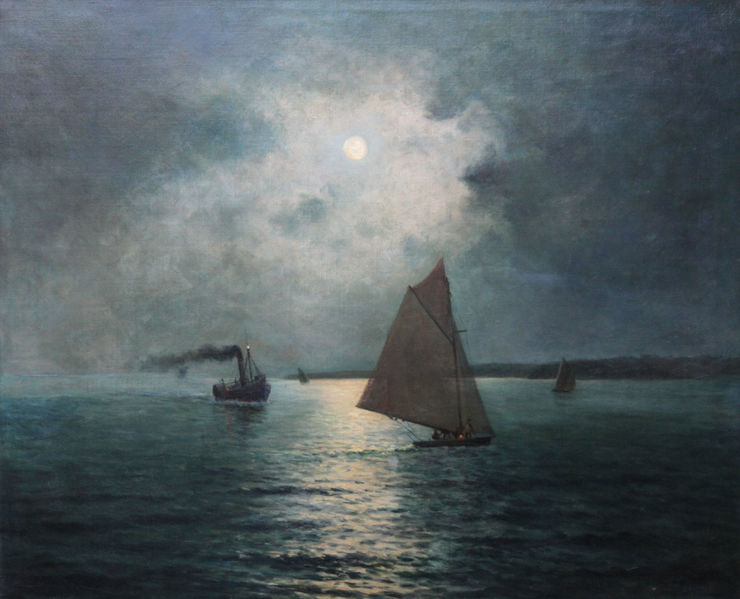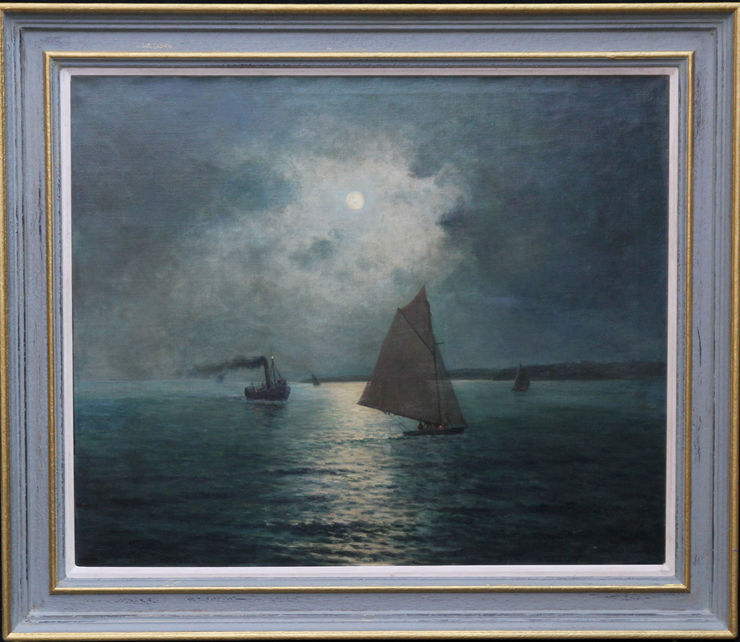| Biography |
James Ashton (1859-1935), artist, was born on 4 April 1859 on the Isle of Man, England. He grew up in the city of York where he was apprenticed to a pharmacist and attended the school of art before gaining a scholarship to the National Art Training School (Royal College of Art) at South Kensington, London. At 17 he returned to York, taught art and worked as a gilder and carver. On 27 December 1880 he married Mary Elizabeth Rawlings Turnbull. Ashton arrived in Adelaide on 11 January 1884 and decided to become a professional painter. He spent twelve months looking for work before a job teaching art at Prince Alfred College enabled him to bring out his wife and son. He established the Norwood Art School in 1886 in two cramped rooms of the Norwood Town Hall where he taught sketching, china-painting and painting in oil and water-colours. In 1895 he returned to England where he paid £240 for three months lessons from Henry Moore, R.A., an eminent marine painter at York. He gained a diploma and on 28 June was elected a member of the (Royal) Society of Arts, London. Ashton was affiliated with the Royal Drawing Society and, after his return to Adelaide via Europe and Egypt, instituted its examinations and much-prized certificates at Ashton's Academy of Arts, which he opened in Victoria Square in 1896. It later moved to Flinders Street, then Grenfell Street. Through the highly regarded academy, 'Jimmy' influenced many painters who later became well known: his son (Sir) John William, Gustav Barnes, Hans Heysen and Ivor Hele. Ashton insisted on basic proficiency in drawing: on the wall of his studio hung a plaque inscribed 'He that attempts to run before he can walk must surely stumble and fall'. His association with Prince Alfred College lasted nearly forty years; he was a jovial popular teacher who allowed the boys to develop their own interests but encouraged them to copy early masters. In 1925 he presented the school with a valuable art collection and he bequeathed his library to it. Ashton had presided in 1896 over the Adelaide Easel Club, a group of rebels dissatisfied with Adelaide's art Establishment. In 1912-14 he was a member of the Commonwealth Art Advisory Board. A trustee and honorary fellow of the (Royal) South Australian Society of Arts, he was its president in 1914-17 and vice-president in 1931; in 1926 and 1929 he won the society's seascape prize. He encouraged six South Australian country towns to begin art collections and his own paintings were bought by galleries in Broken Hill, Bendigo, Perth and Colombo. He was a justice of the peace and a Freemason. In 1927 Ashton, a rubicund tubby figure with silver hair and waxed moustache, who usually wore a flower in his lapel, retired to live in a terrace by the sea at Brighton. Here, between nine trips to Ceylon (Sri Lanka) and despite painful arthritis, he continued painting his favourite subject, the sea. He was an effective draftsman and a loving, careful observer of nature, though by later standards rather sentimental. His best seascape, 'The Moon Enchanted Sea', is in the National Gallery of South Australia. In 1934 his oil portrait, now held by the family, was painted by Leslie Wilkie. On 2 August 1935 Ashton died and was buried in St Jude's Anglican cemetery, Brighton. He was survived by his wife (d.1945), daughter and son; his estate was sworn for probate at £889. |

